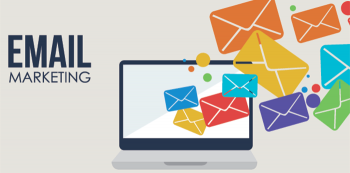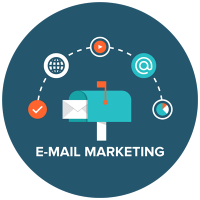
Email Marketing- Still Alive and Kicking
Due to the emergence of modern day marketing techniques, SEO, social media and remarketing (just to name a few) are on the tips of everyone’s tongues, with businesses rushing to these up-and-coming methods to boost sales. Does this mean that more old school methods such as email marketing are taking a back seat? Evidence shows that this is far from the case, with email marketing not only still alive and kicking, but also more prevalent than ever before. Don’t believe me? Here are a few statistics that speak volumes…
With 2.586 billion email users worldwide (businesses and consumers), 122 billion emails are sent every hour. Within these businesses 80% of content marketers use email marketing, with 55% of companies using this method to generate more than 10% of their sales. Also, in comparison to social media marketing within Facebook and Twitter, email has been 40x more effective in acquiring new customers
Therefore, It’s fair to say email marketing is a big deal. Here’s a few types of email that your company can incorporate into its marketing mixture.
Types of email:
- Email Newsletters- regular updates from a company to its list of subscribers. This is used to develop or maintain the bond between the two parties in a relaxed, social tone, without an overarching emphasis on sales. Despite this, a newsletter keeps customers up to date with any occurrences, as well as reminding them of your presence, developing brand recognition.
- Transactional Emails- sent to a customer to verify a transaction such as a purchase or reservation. Despite this, many marketers use this means to further implement their sales attempts by including a sales pitch within the email. This could be links to similar items, or the option to upgrade services.
- Direct Emails- emails specifically used to inform customers of sales, special offers and new products in an attempt to increase sales. By providing a link to a website or specific product, customers can access the contents conveniently and quickly.

So you know the basics of email marketing. Here are some advantages of how developing your email marketing campaign can be stress free, but also incredibly beneficial:
- Ease Of Use
Attaining the service of an email marketing provider and running an email marketing campaign has never been easier. With companies such as HubSpot, MailChimp and SendGrind (just to name a few) allowing you to create extensive contact lists in order schedule and automate your mail, what used to be a monotonous process, is quick and simple.
- Analysis
The ability to analyse your sent emails is an effective tool in order to measure the effectiveness of your campaign. By measuring views, bounce rates, click-through rates etc you can measure just how effectively your emails are reaching their designated recipients, allowing you to adjust and develop your strategy to your heart’s content.
- Cost Effective
Research by the Direct Marketing Association has lead to an estimation that every £1 (roughly 35 CZK) invested in email marketing yields returns of approximately £40 (roughly 1427 CZK). It doesn’t take a mathematician to realise that these are substantial profit margins! In addition, the costs of a marketing campaign are low compared to other methods. Apart from a subscription fee for specialist software from a recognised provider, thousands of emails can be sent at one time without printing, postage or exposure costs.
- Target Audience
With email marketing, you can pinpoint specific contacts who are most likely to make a purchase. One way emails are beneficial is that you can target those who have explicitly signed up to receive them. This can influence higher conversion rates due to reaching out to those who have already shown an interest in your brand, nurturing the relationship between the two parties in the process. Furthermore , segmentation can lead to even more precise marketing. If you want to reach out to a specific category of recipient (e.g. hotels or restaurants in the local area, or those previously interested in a specific product during a sale) you can do just that; send your emails to those subscribers who meet the exact criteria you desire.
- Instantaneous and Worldwide
So you’ve sent an email regarding a 24-hour sale to a number of recipients in various countries? Within minutes, these emails will be received, giving them instant access to your service and hopefully be enticed into making a purchase. Moreover, those in foreign countries are still notified at the same speed, much quicker than broadcasting on the radio or television, or even printed mail. Emails can also be tailored in order to cater for worldwide consumers. Examples of this are language variations and emphasising particular products within foreign markets. Therefore email provides huge flexibility and convenience, with access to a much wider audience than other marketing methods.
- Call to Action
By installing a call to action button linking recipients directly to your website or checkout page, impulse buying can be taken advantage of as well as encouraged. An email allows users to be informed of a product, and purchase said product moments later. In tandem with segmentation, incorporating a call to action button can dramatically increase your conversion rate due to those who are interested being notified quickly, then being able to make a purchase in just a few clicks.
These are just a few reasons why email marketing is so effective. Even with these reasons alone, it’s hard to understand why email marketing is often overlooked within modern-day marketing. With a little guidance, the right message, aimed at the right audience, an email campaign could generate the boost in conversions that your business truly deserves.

